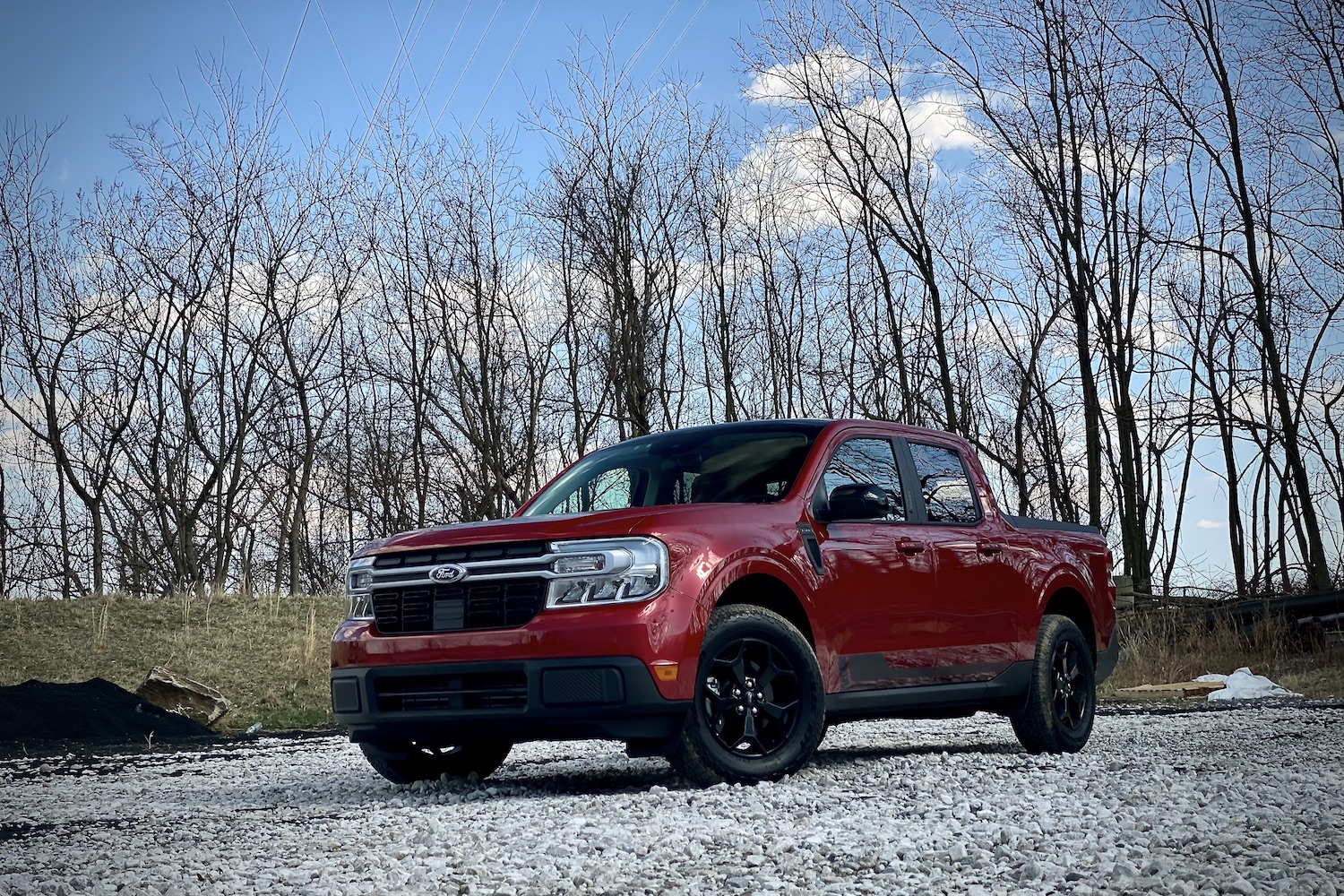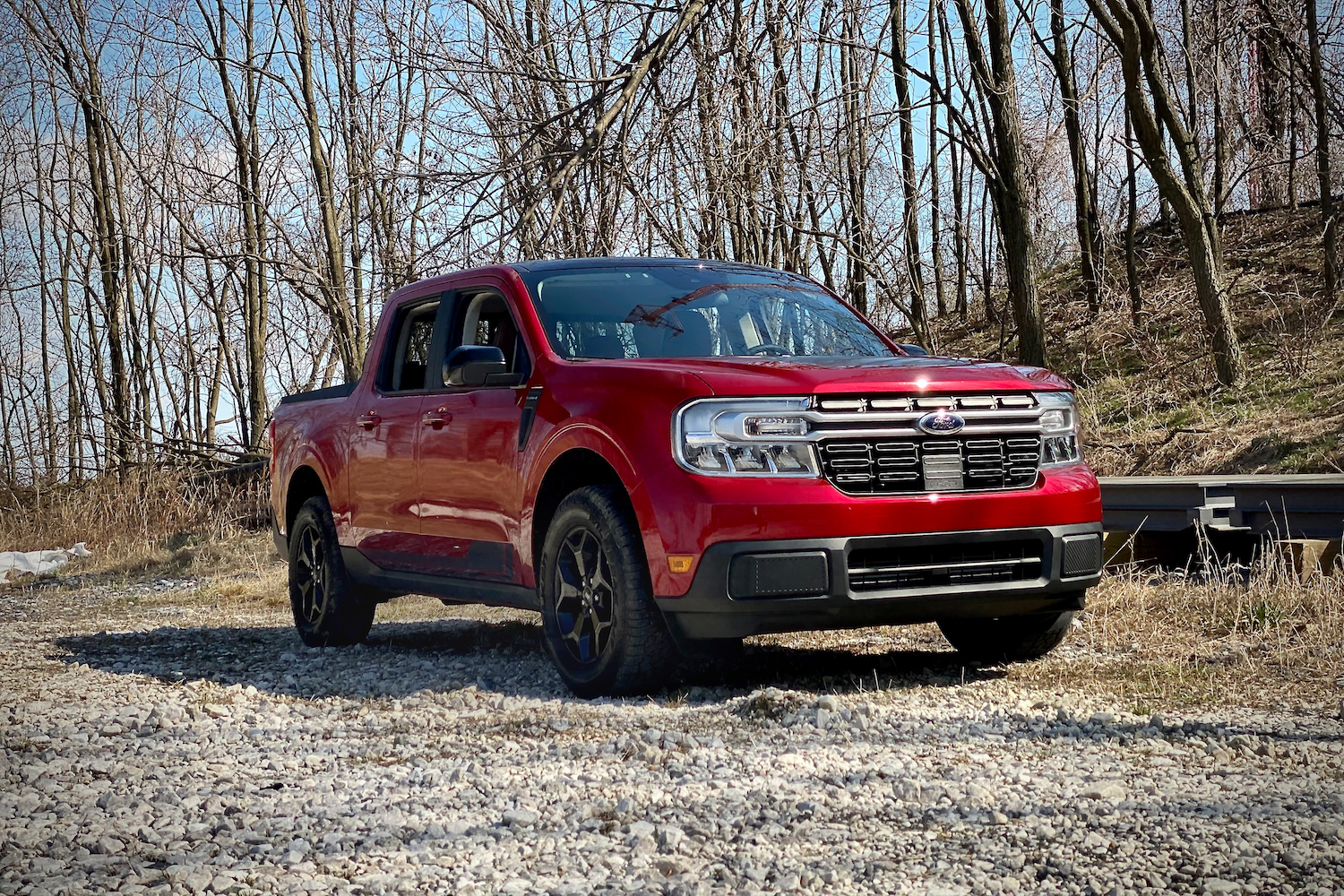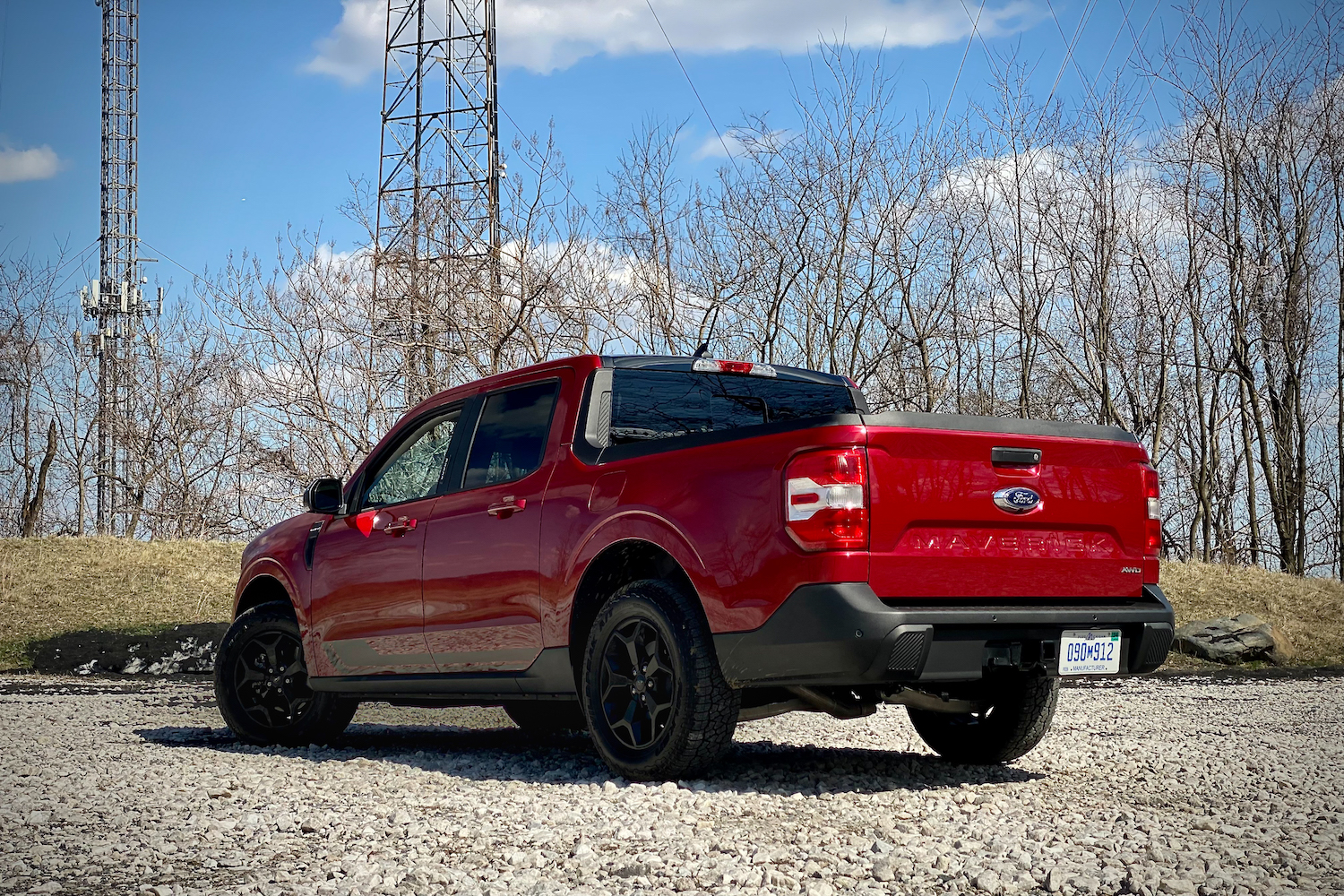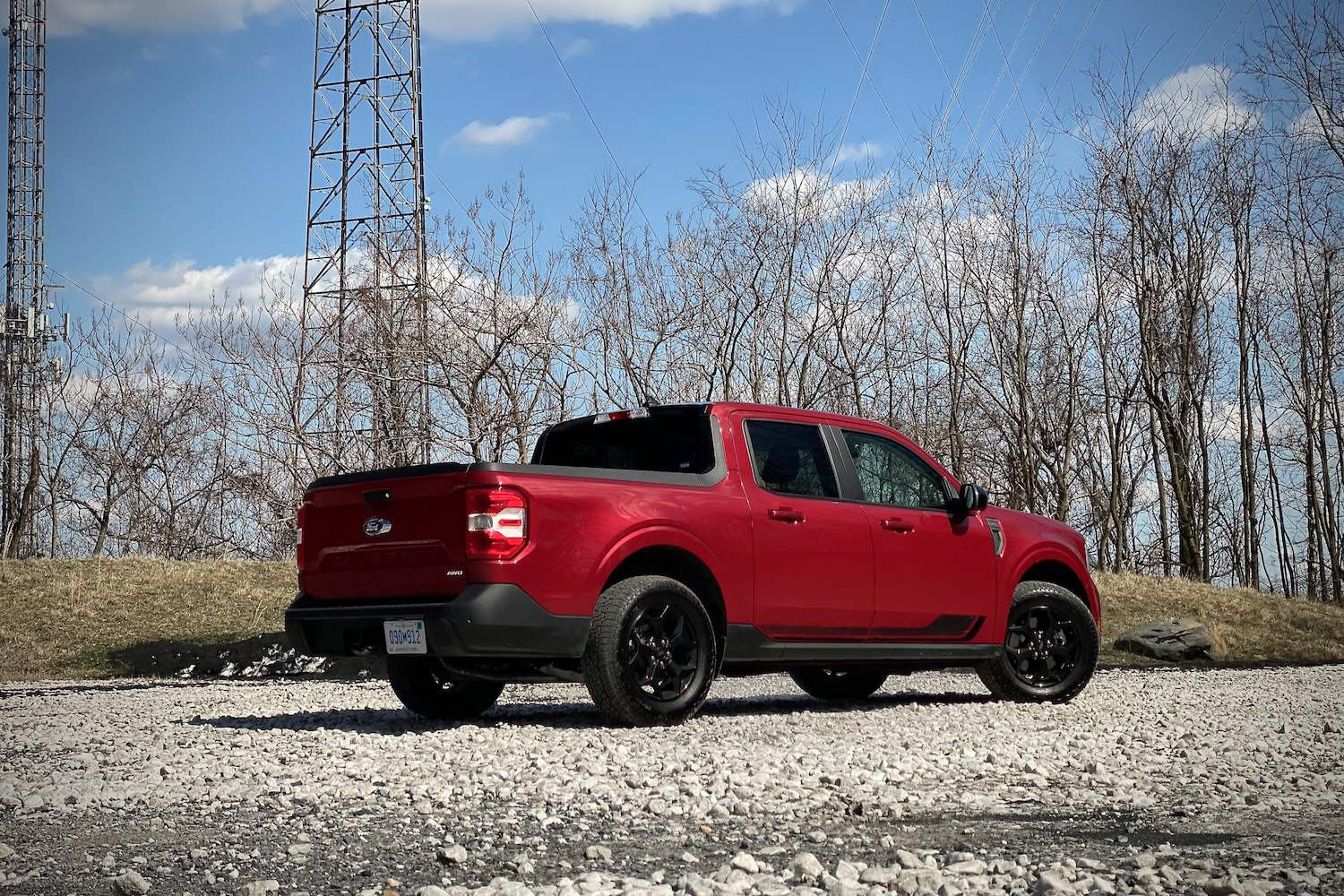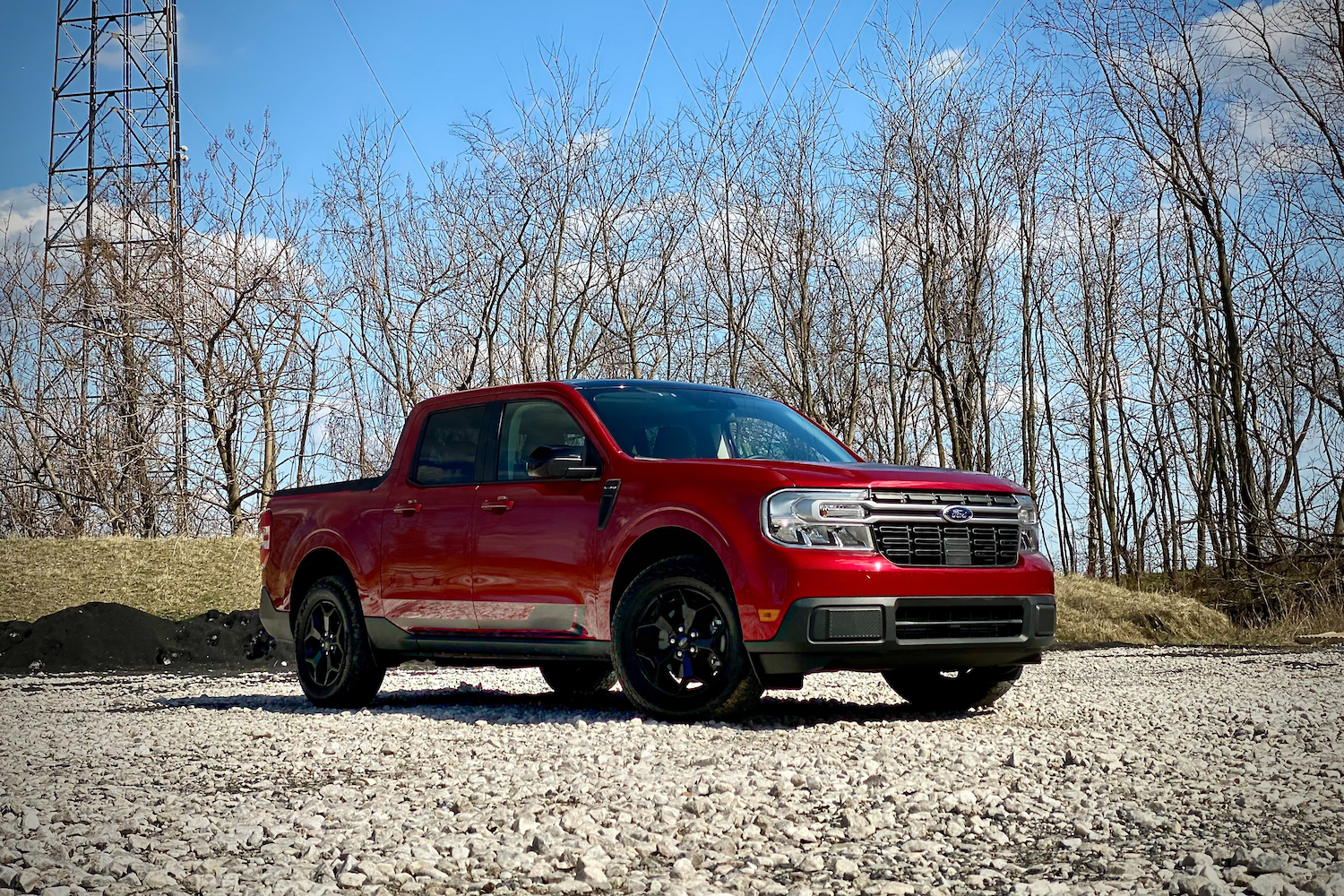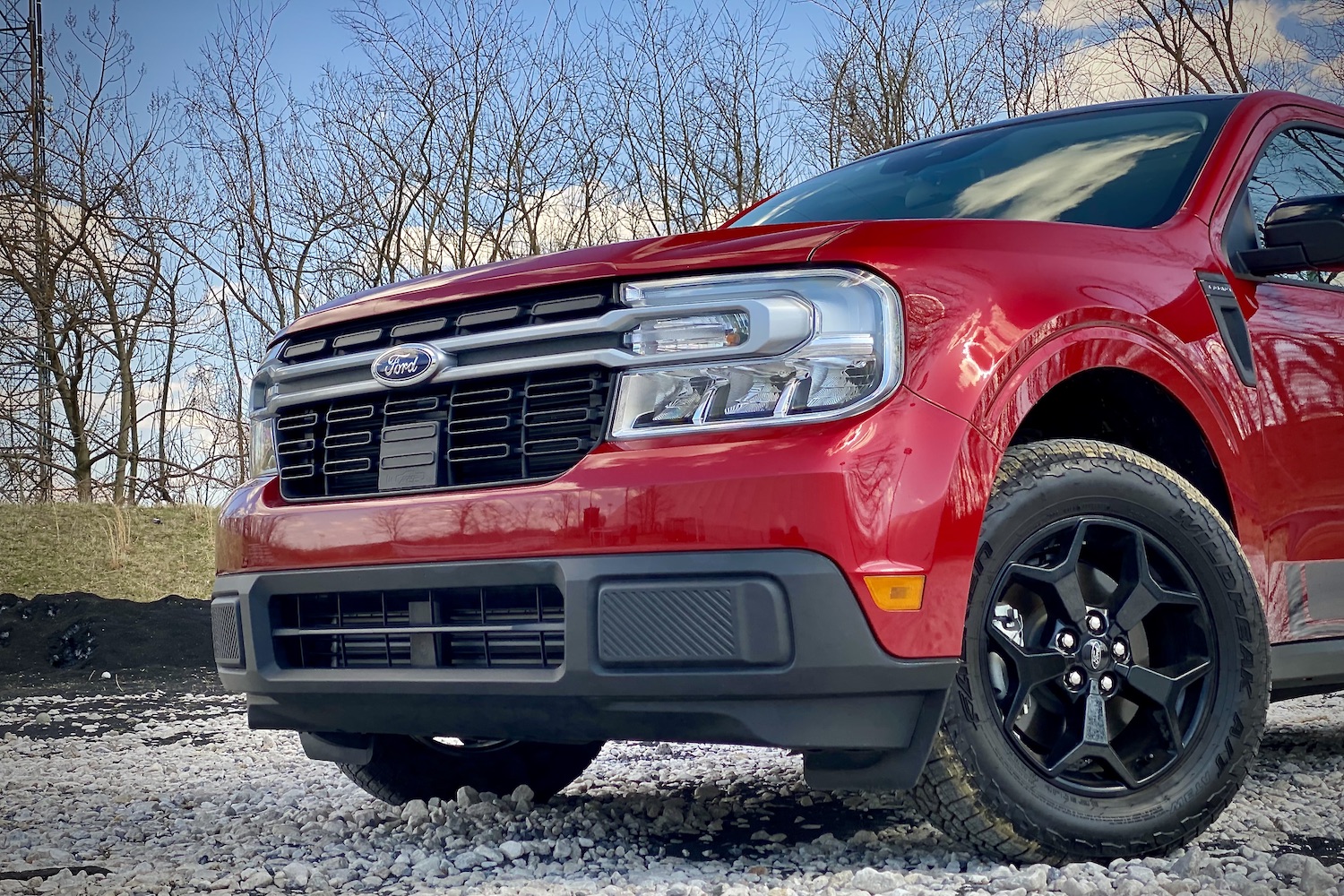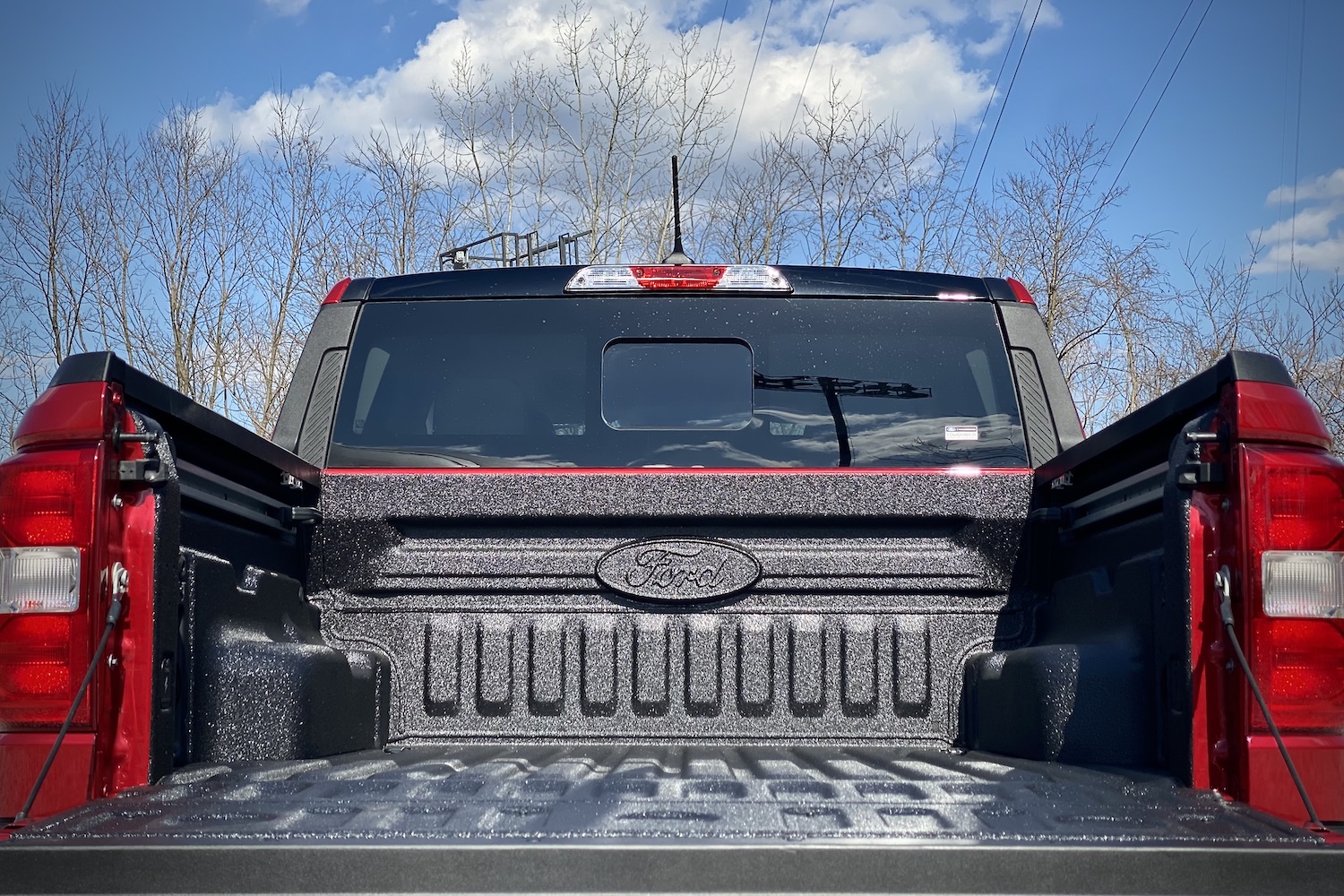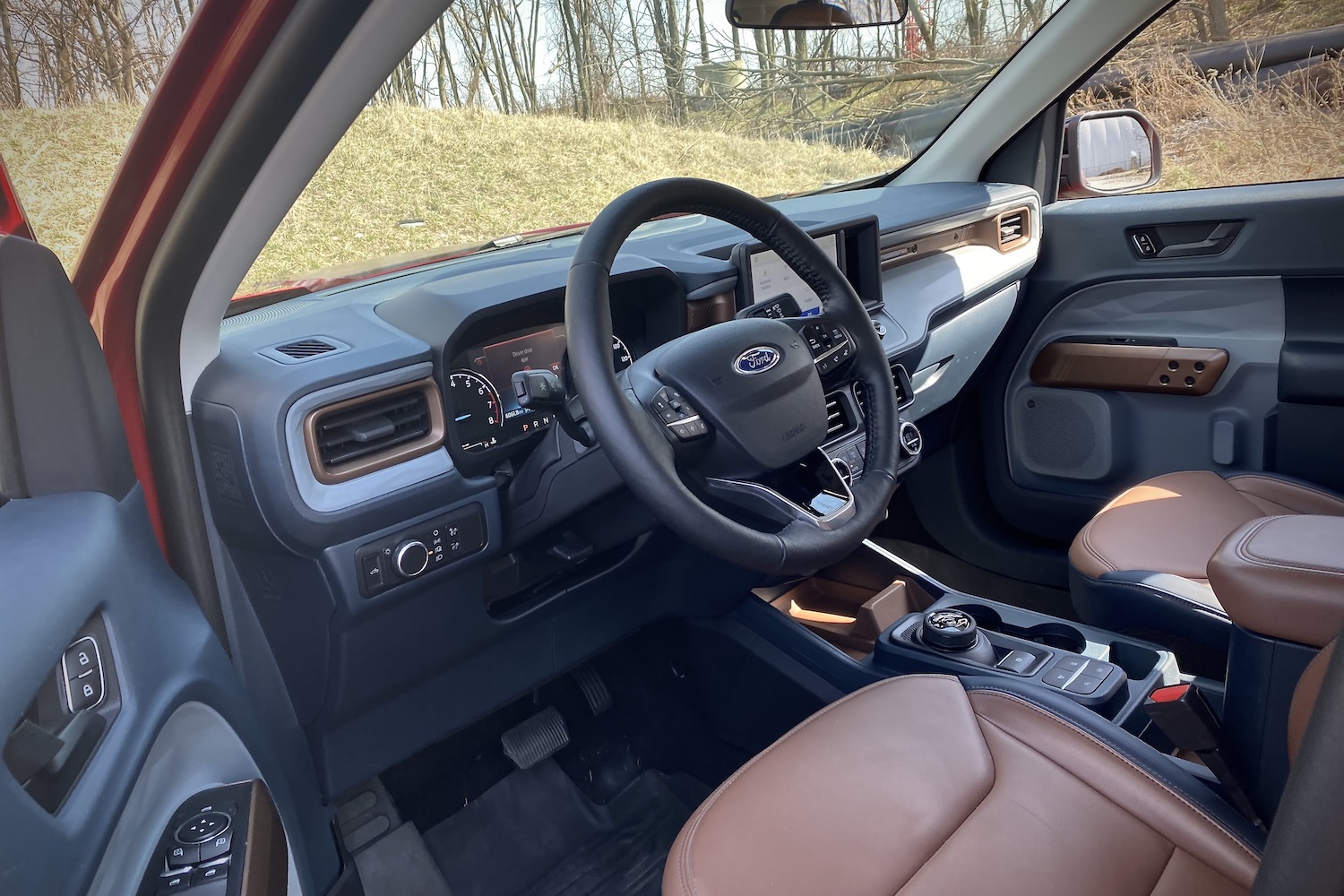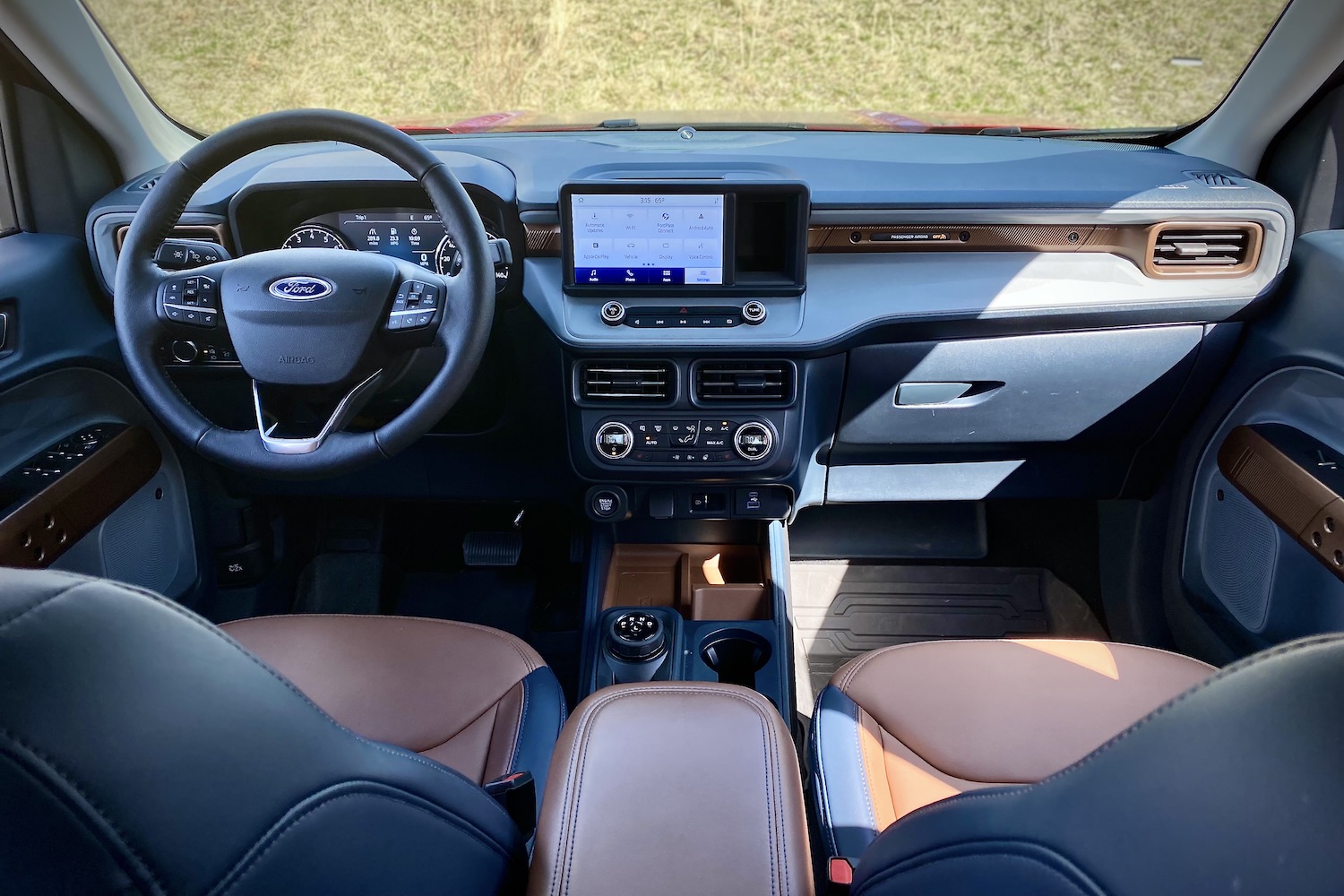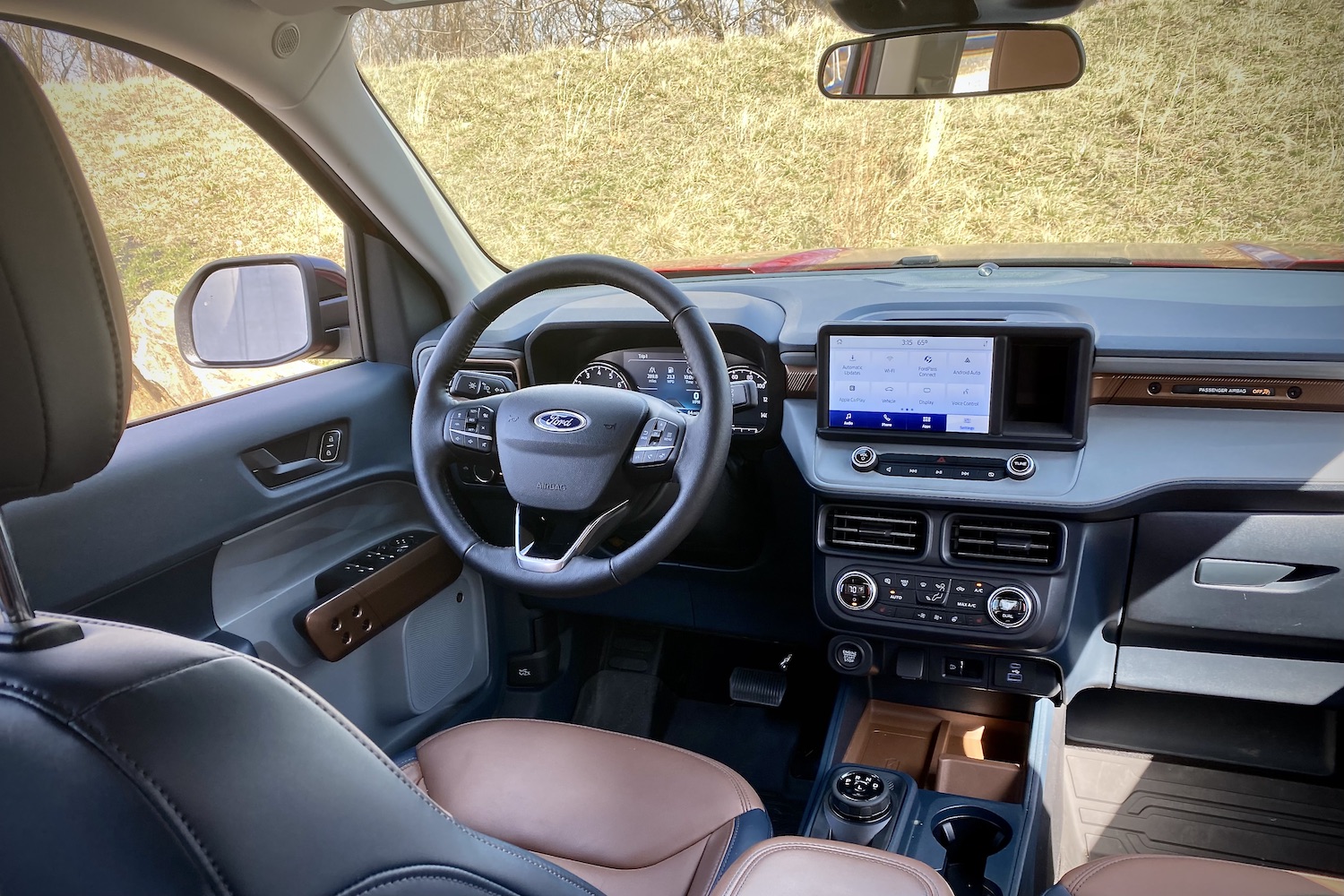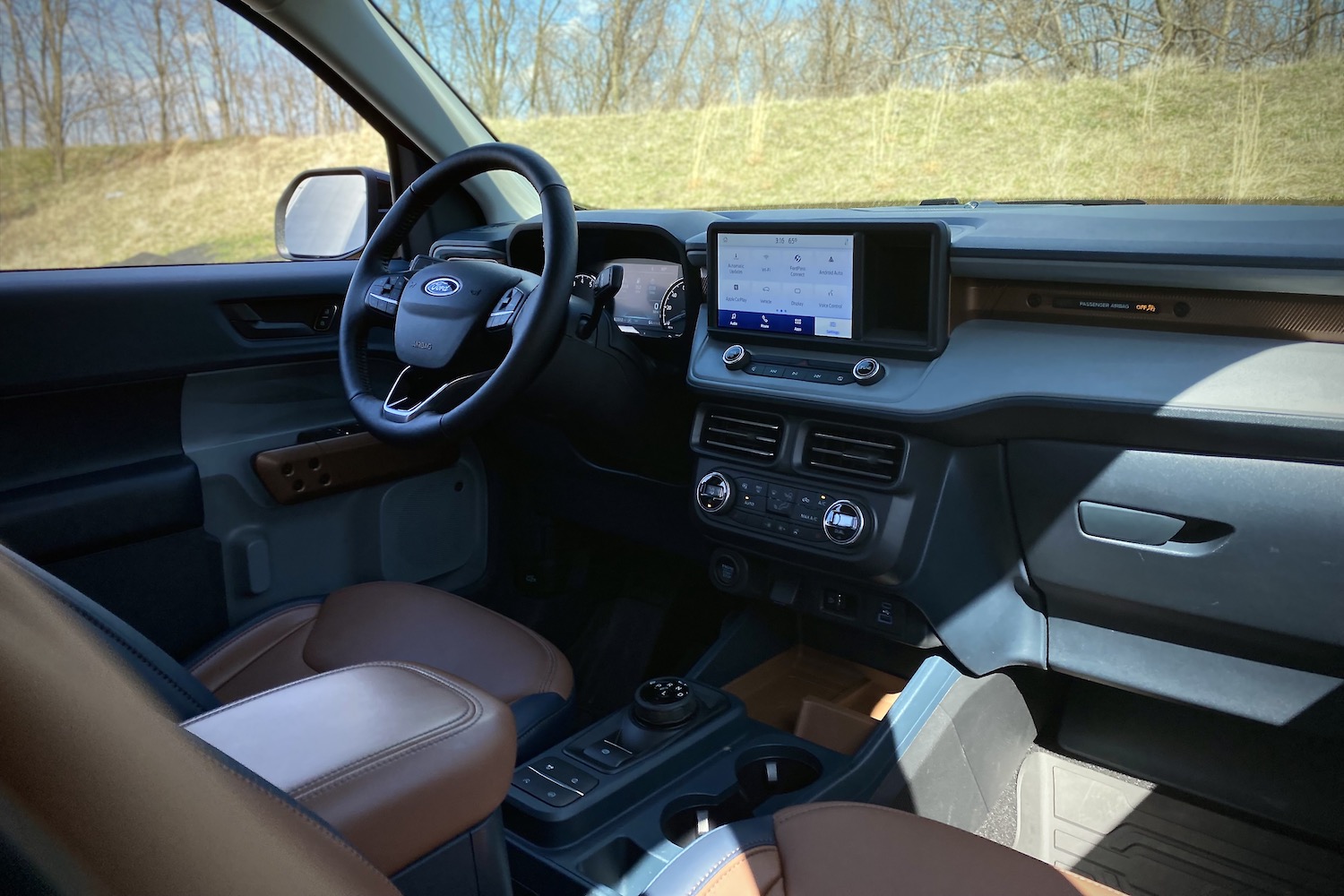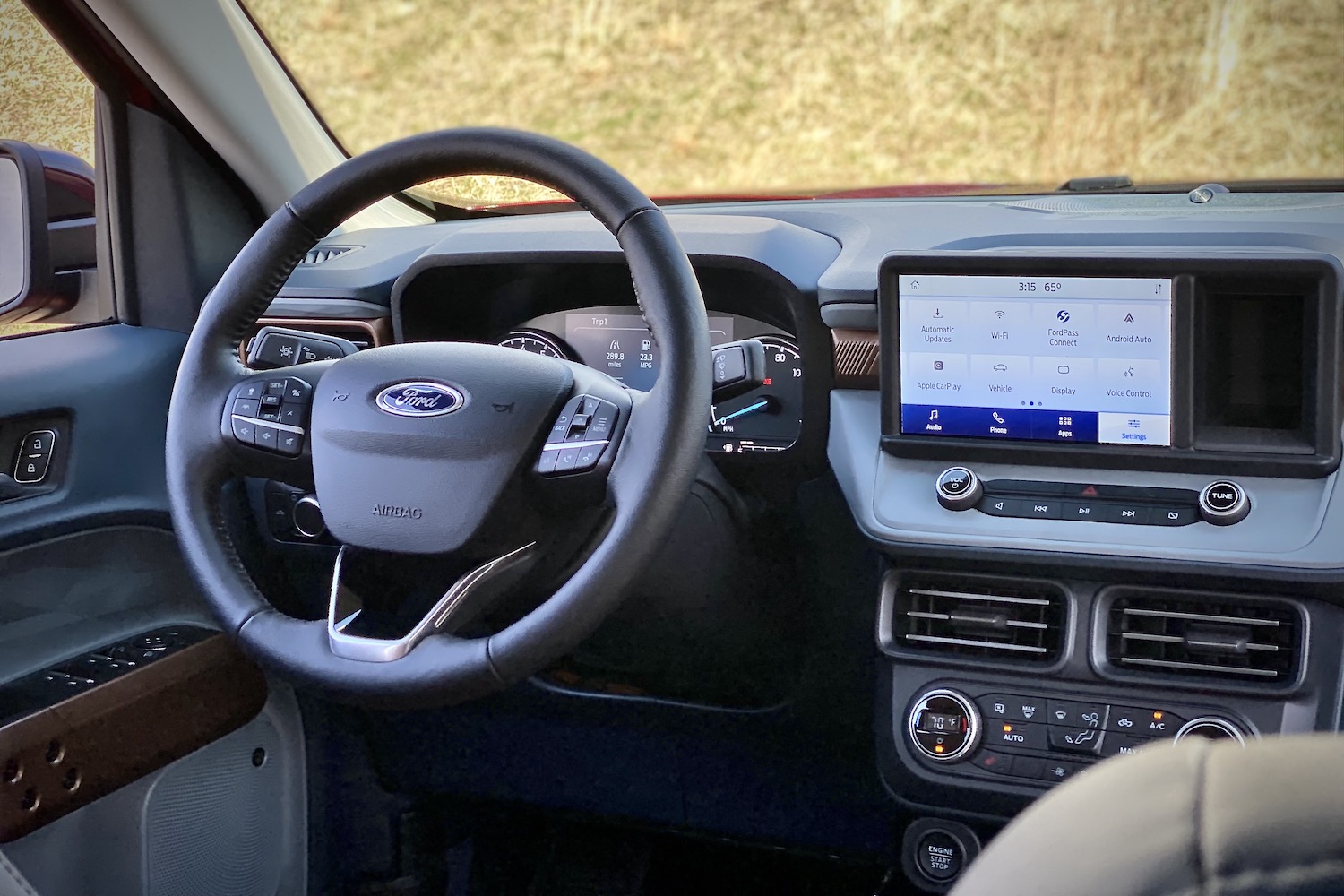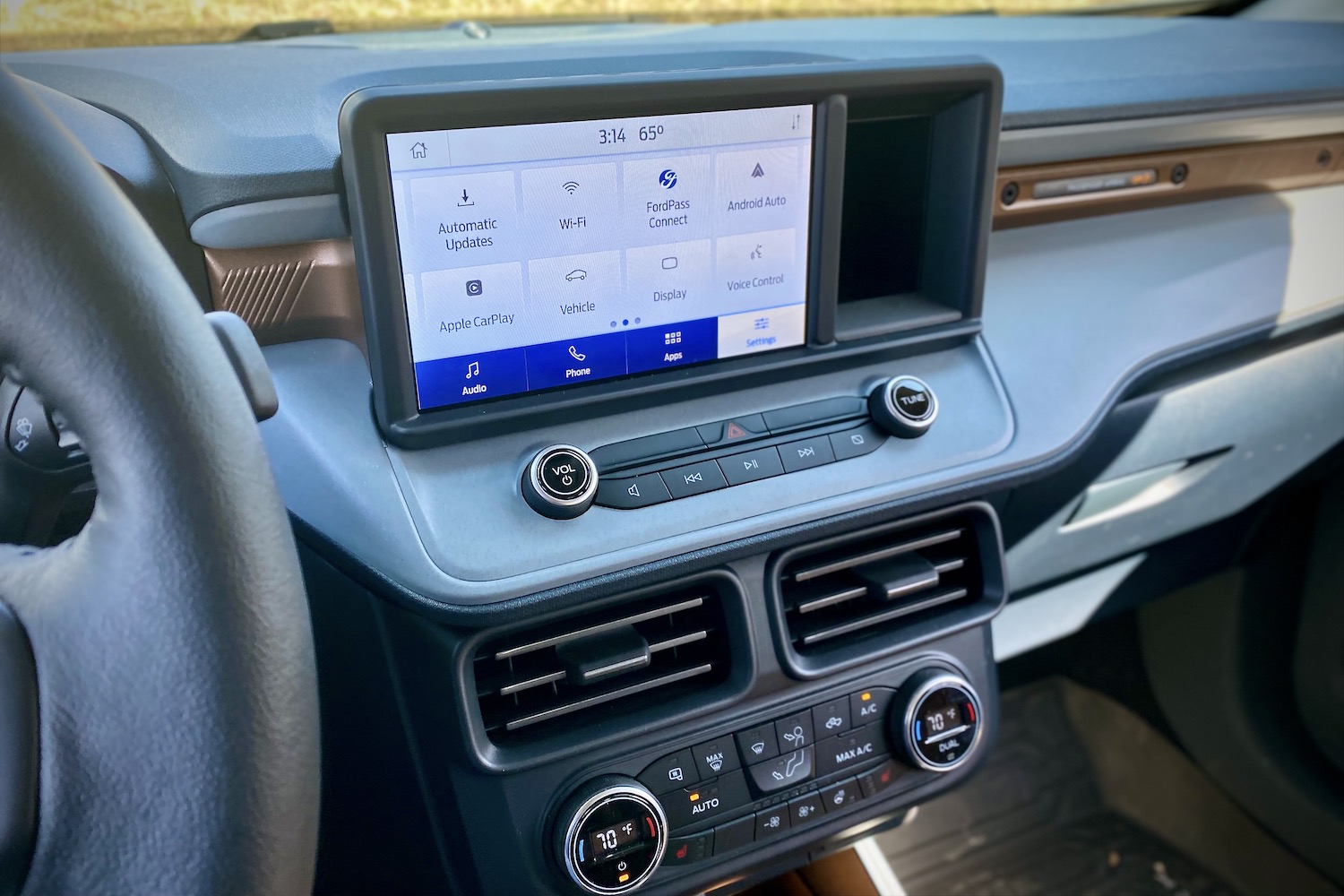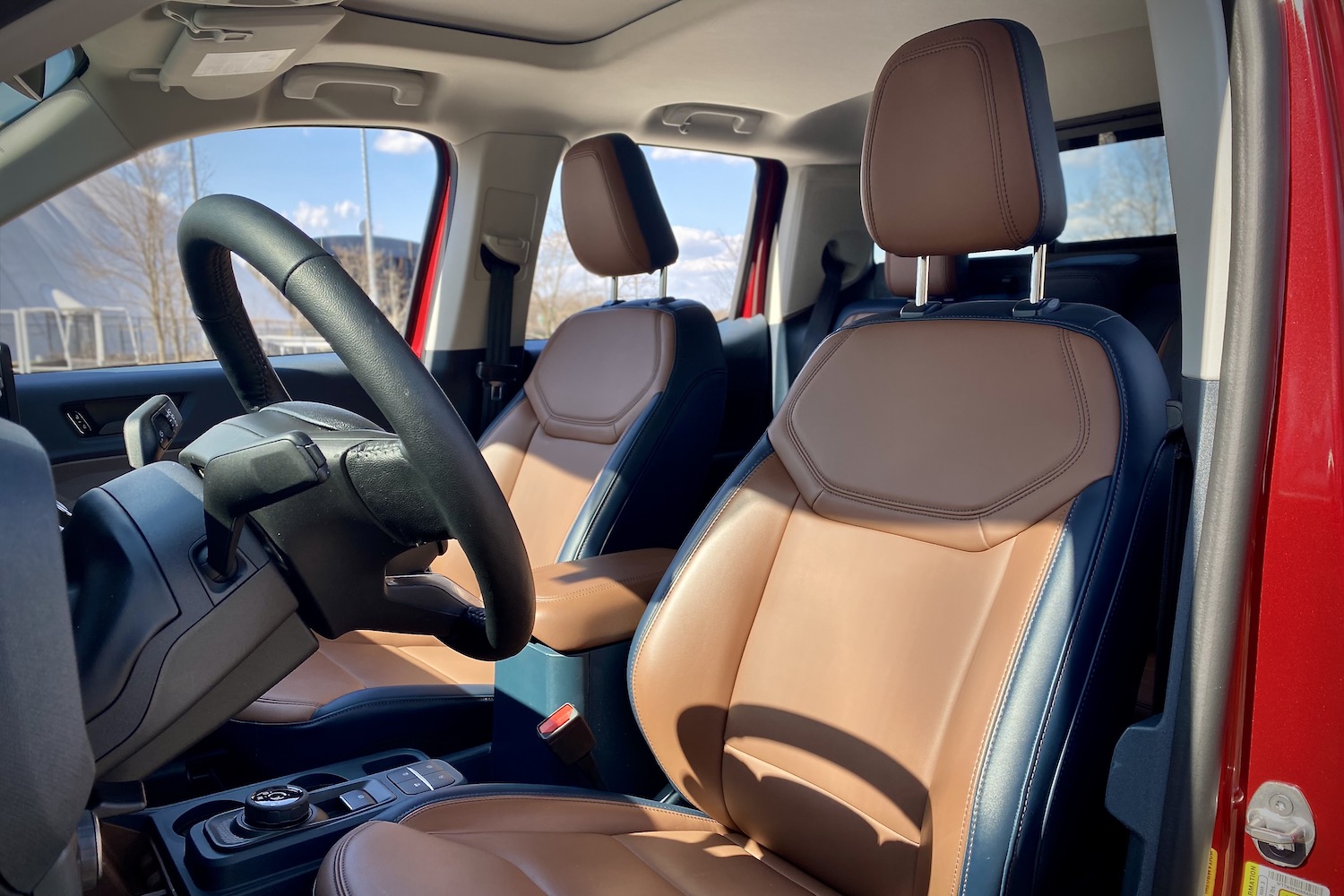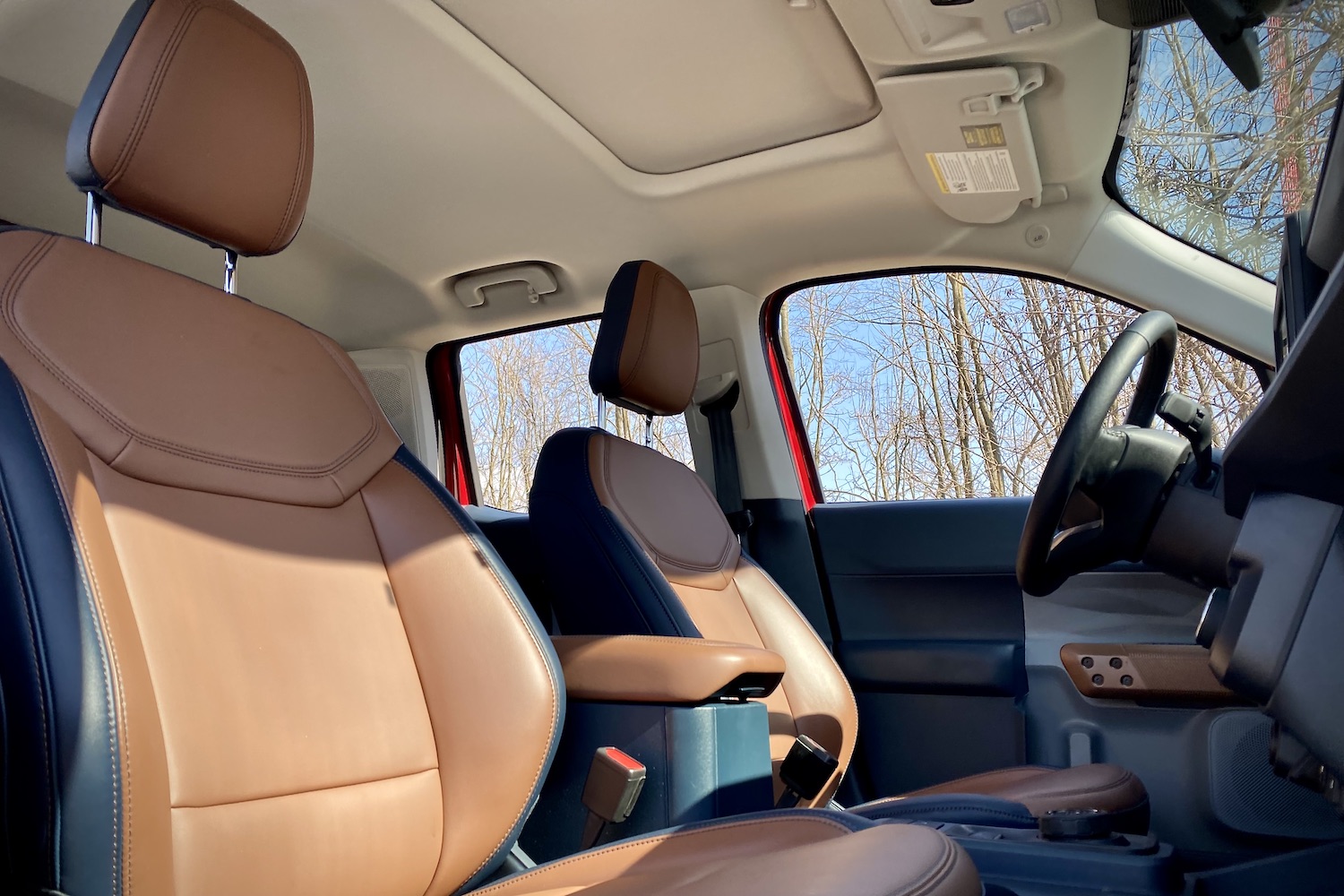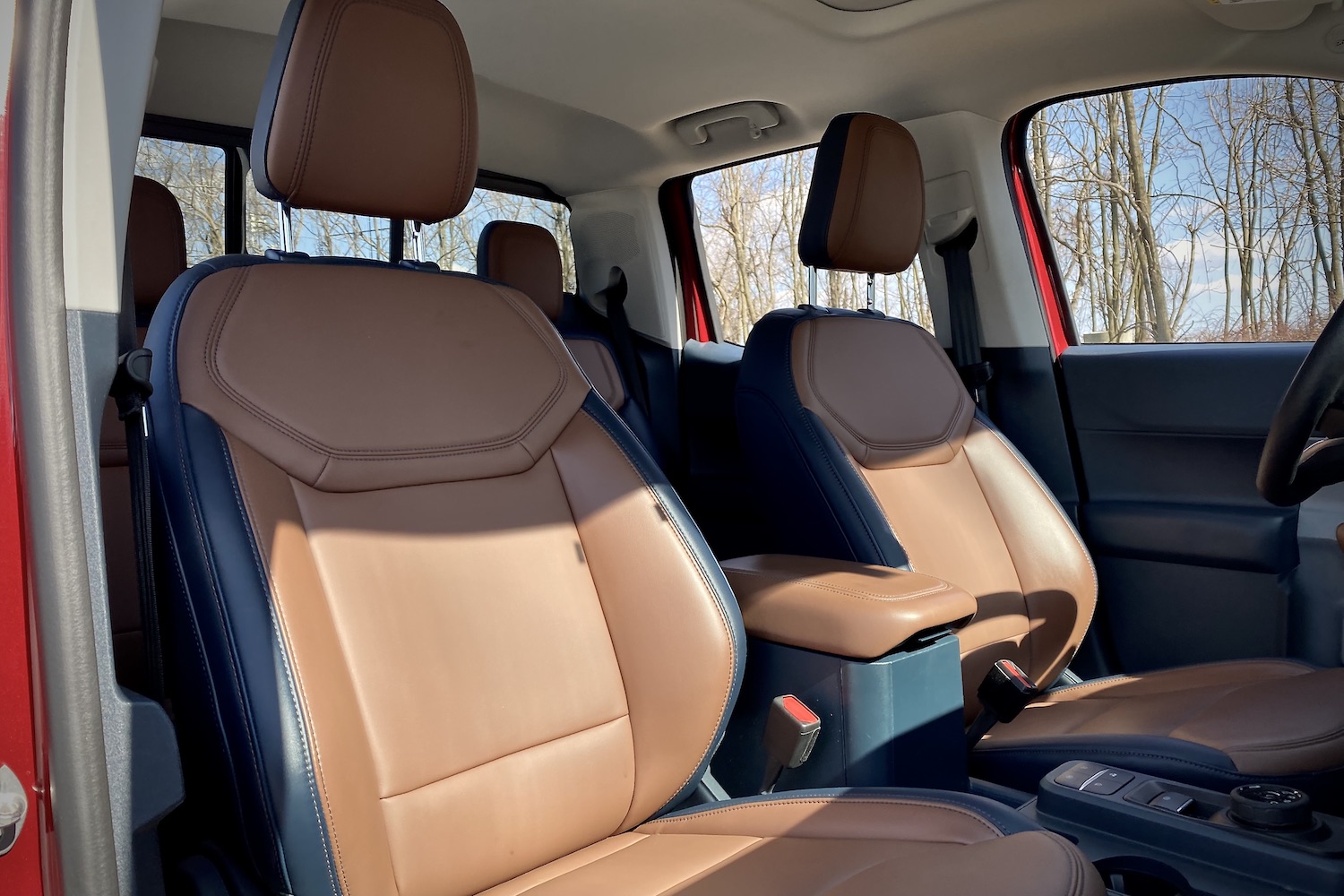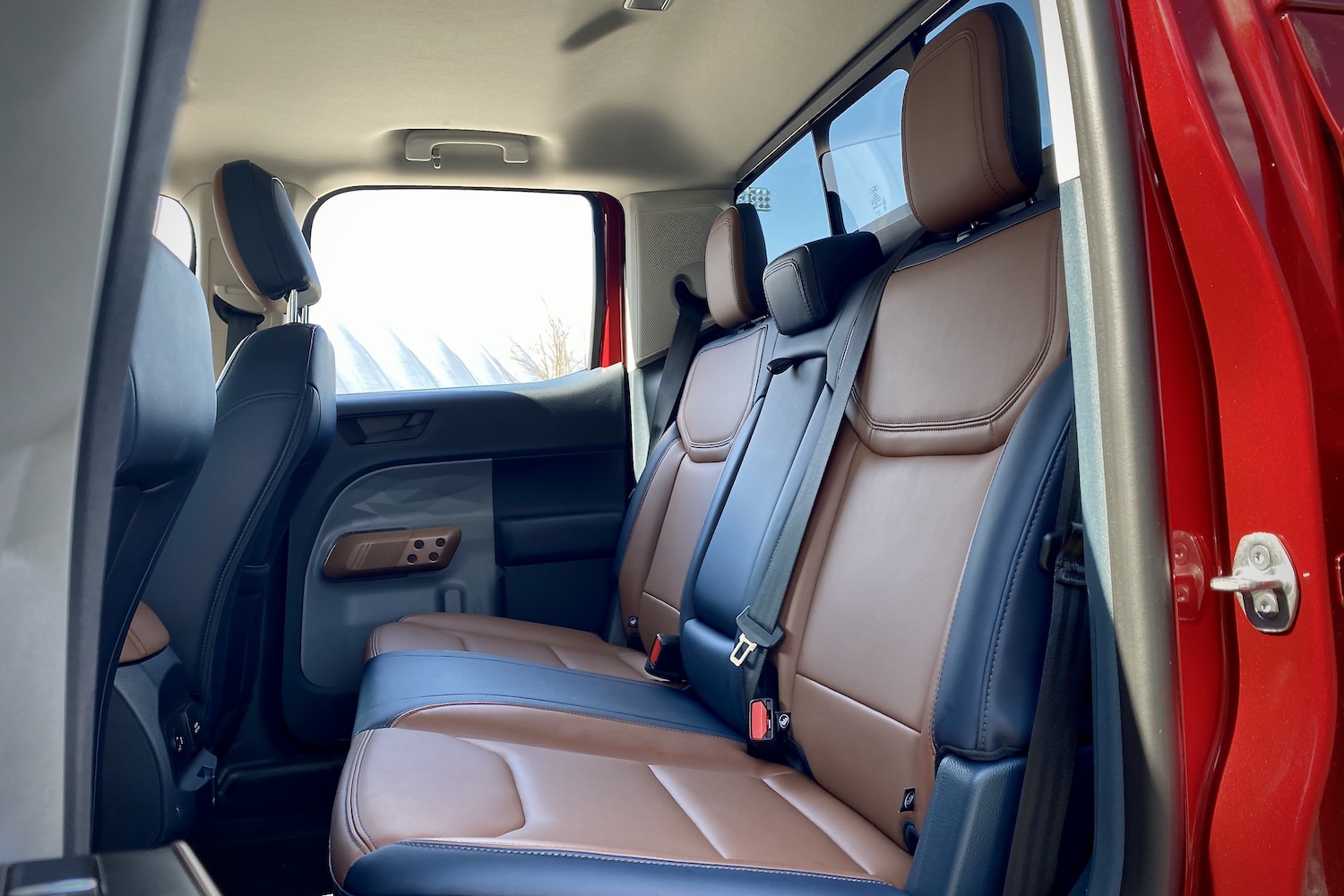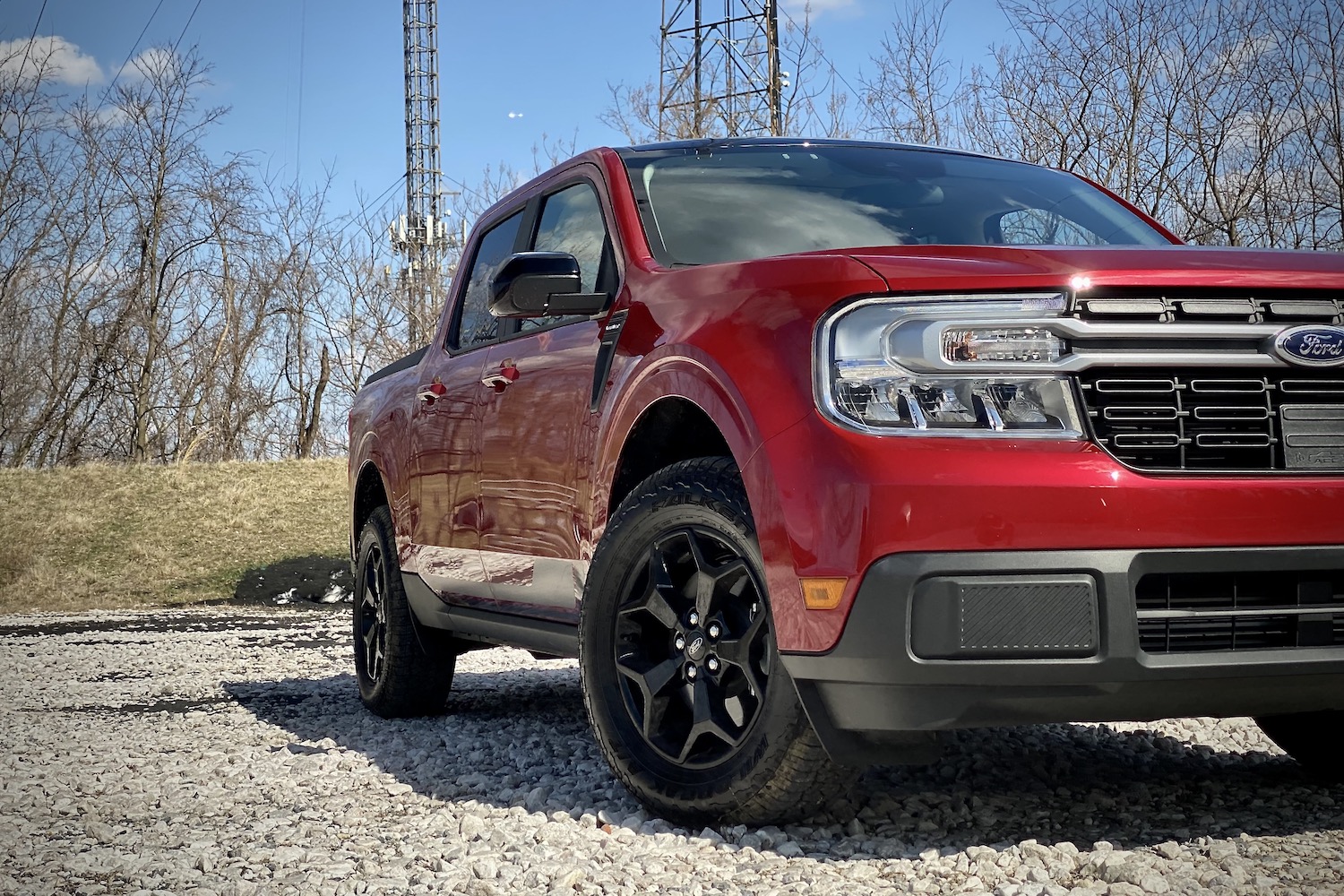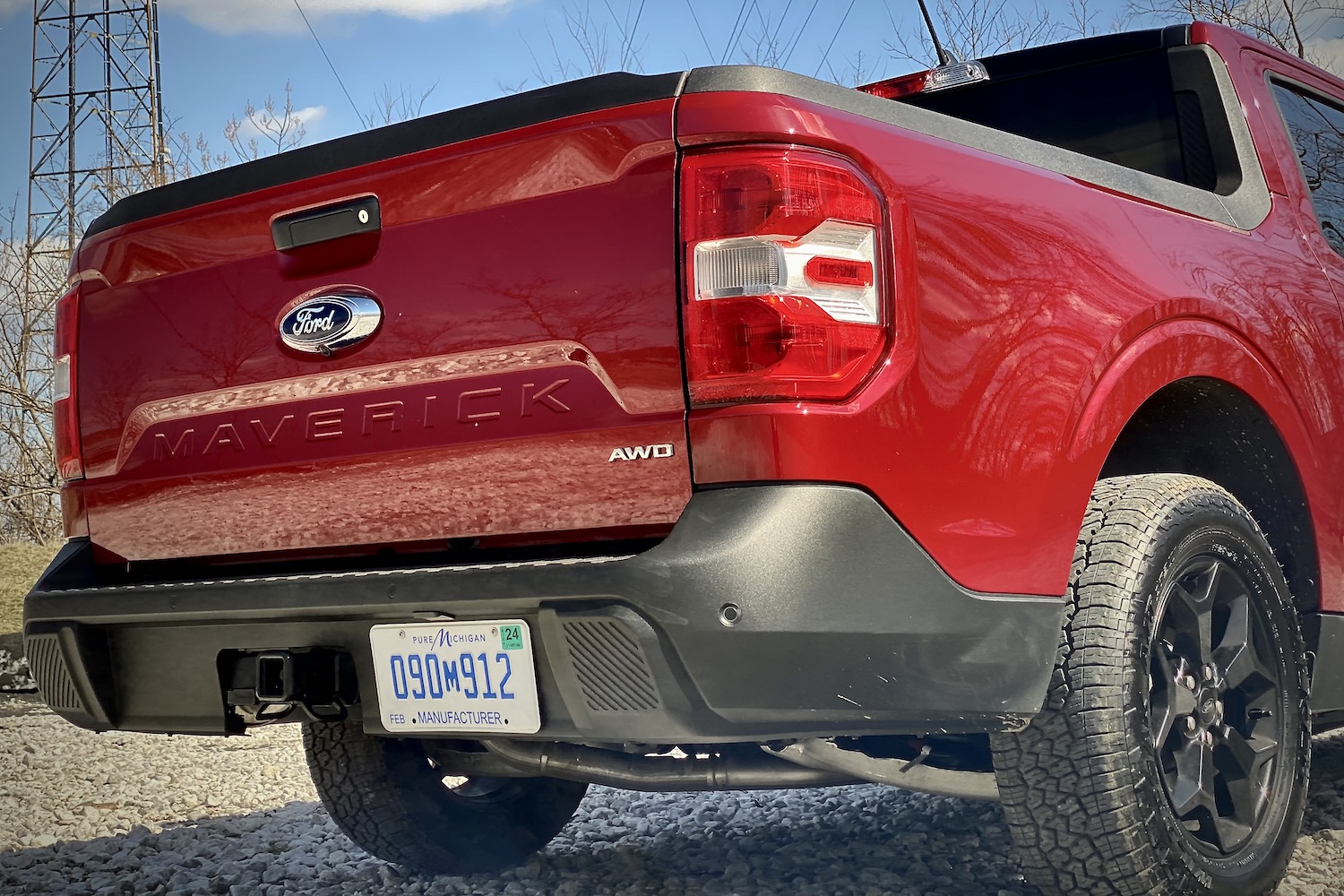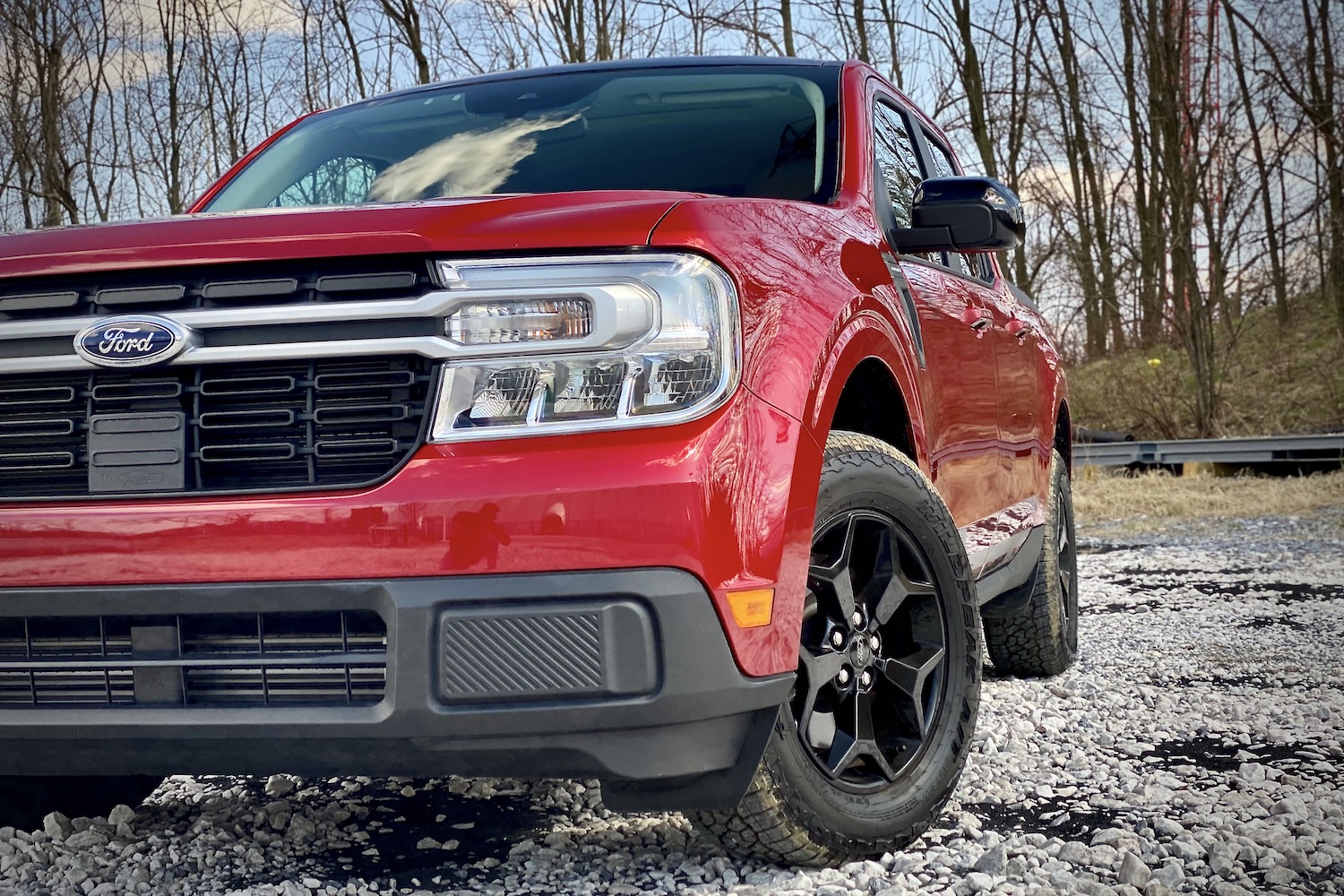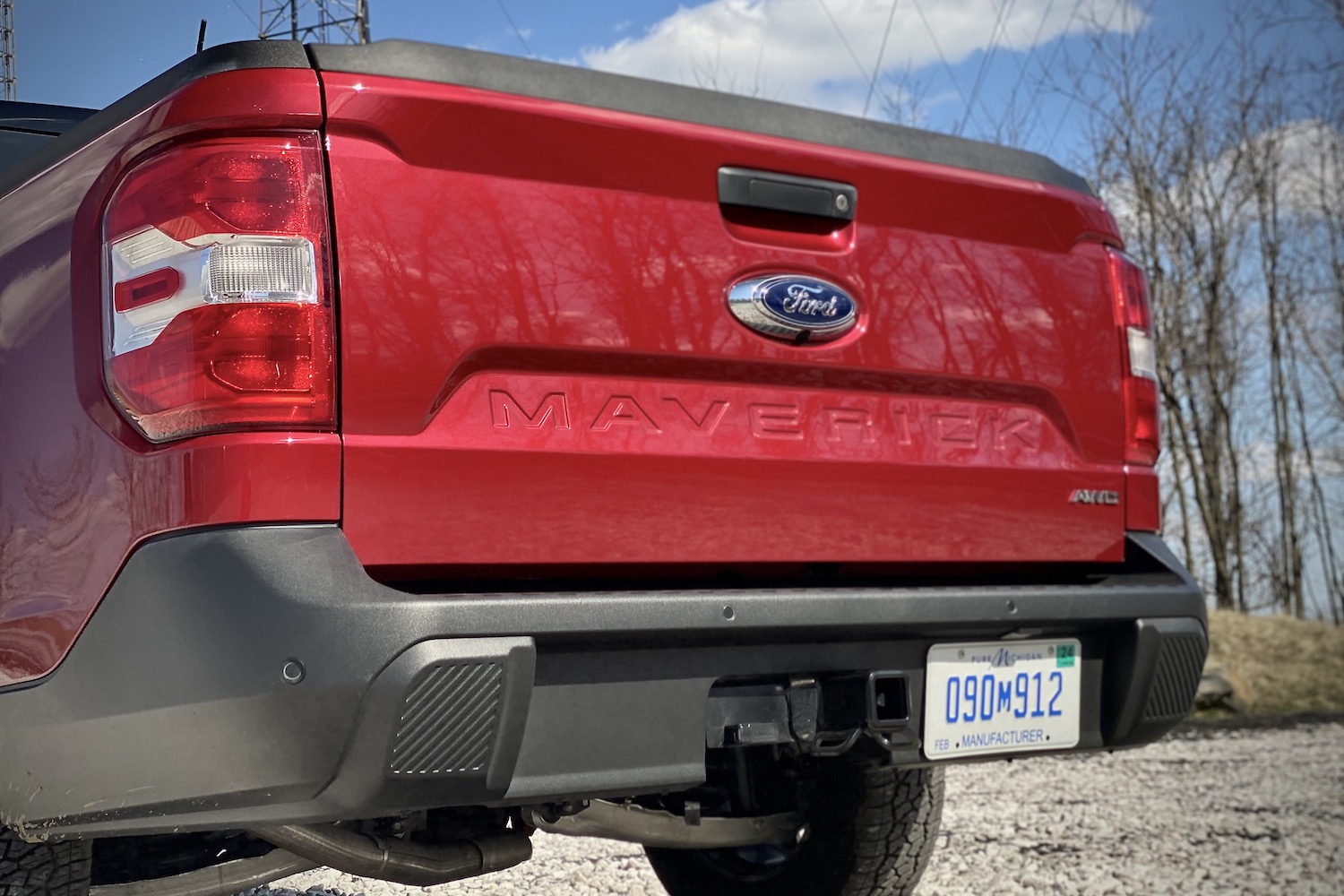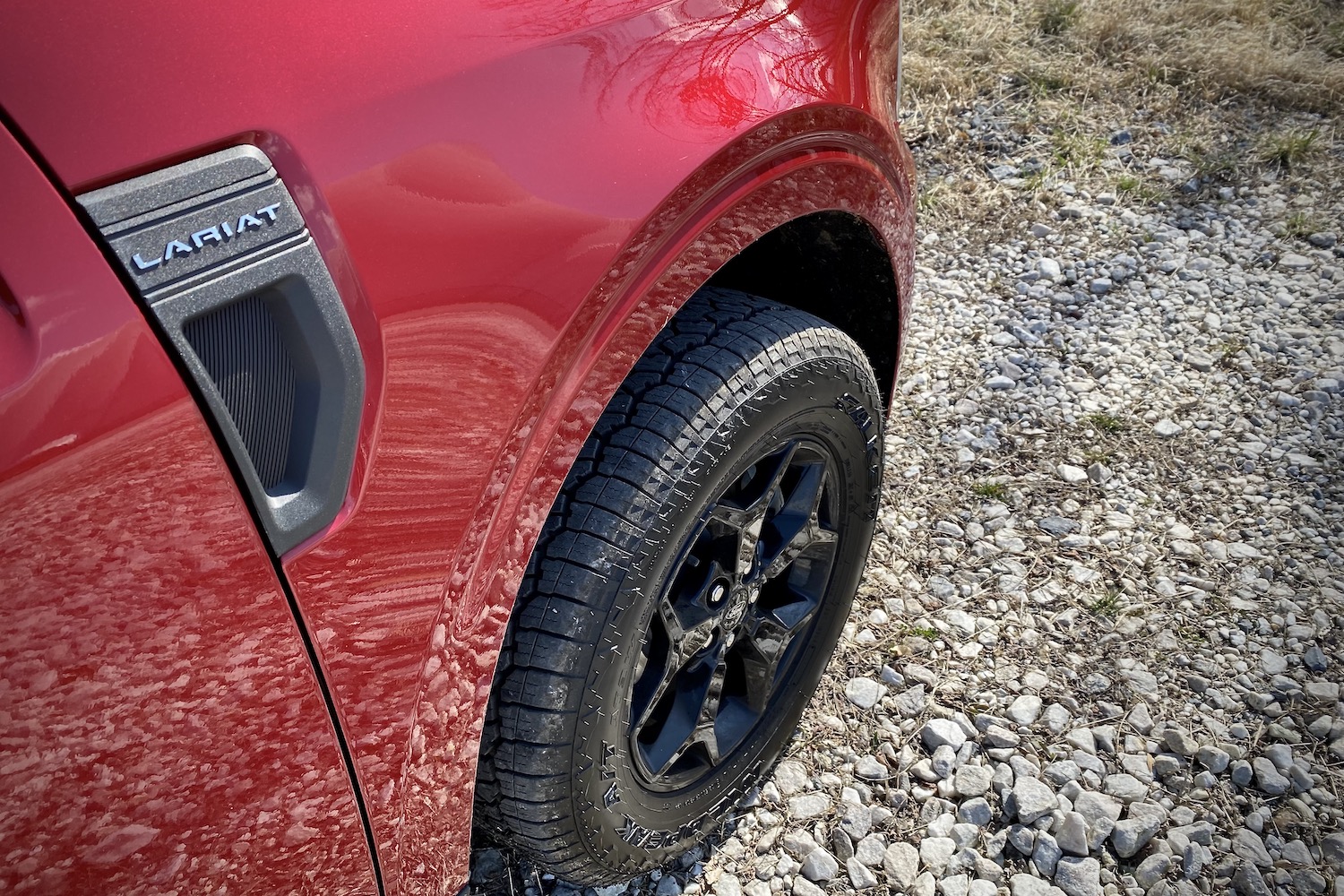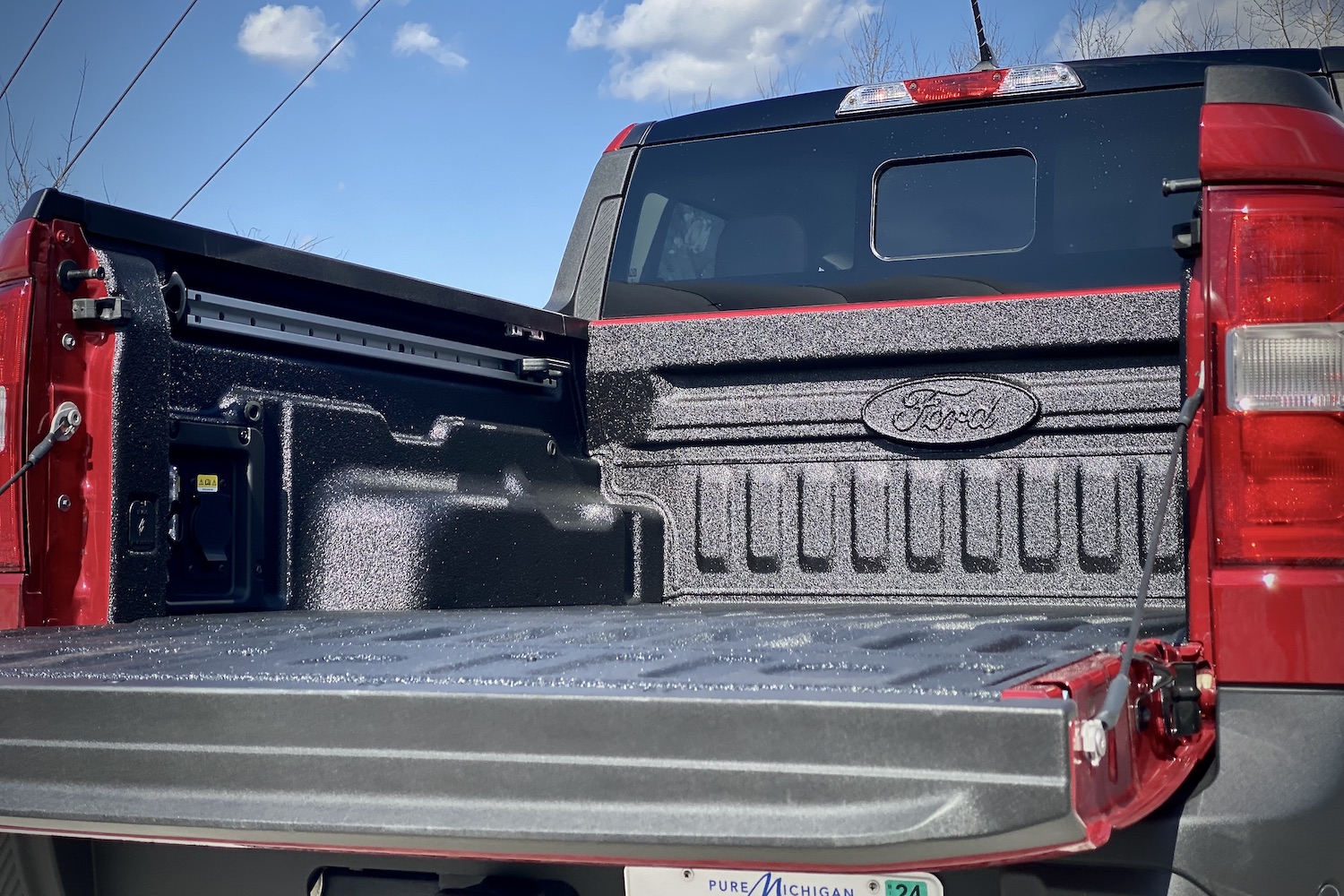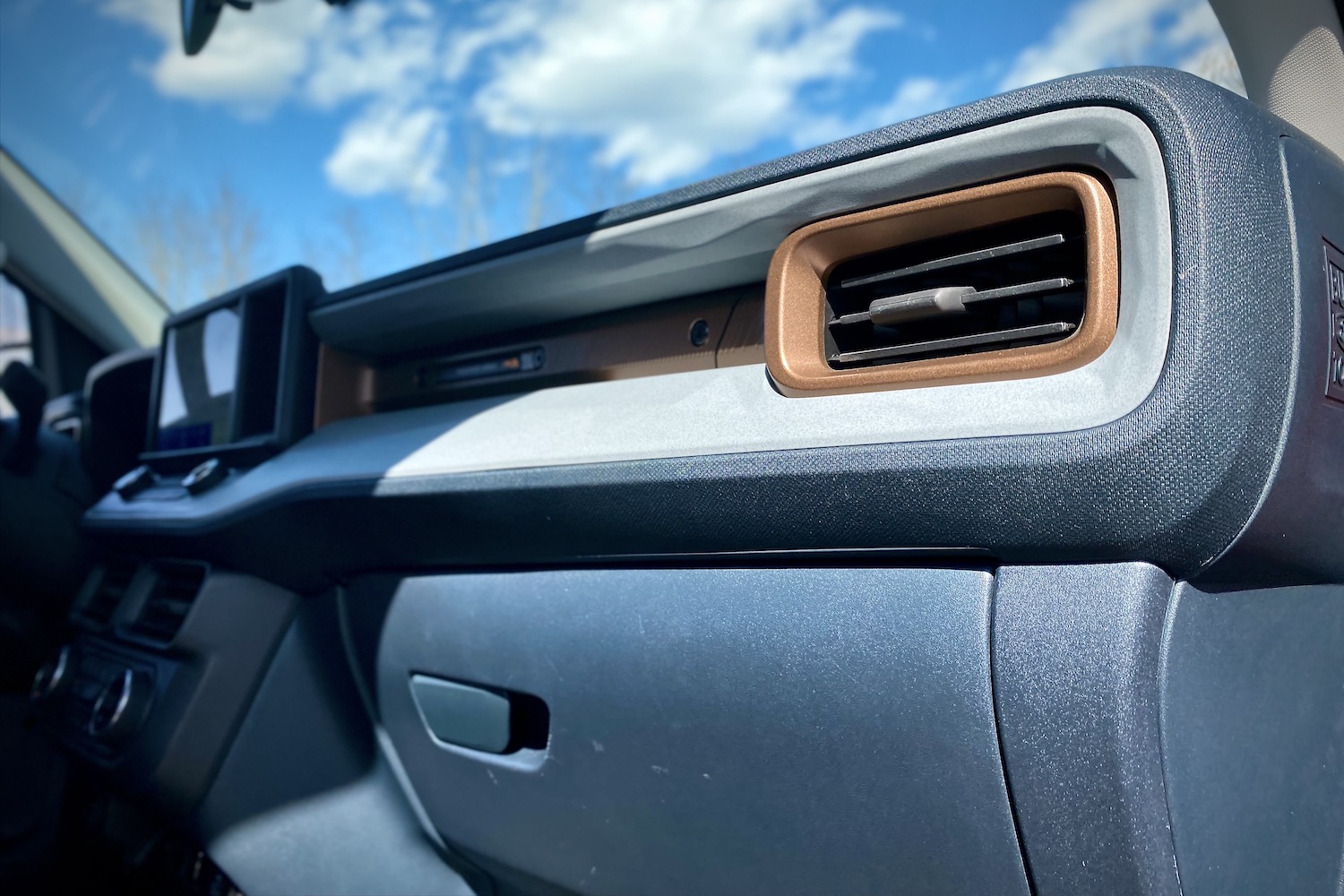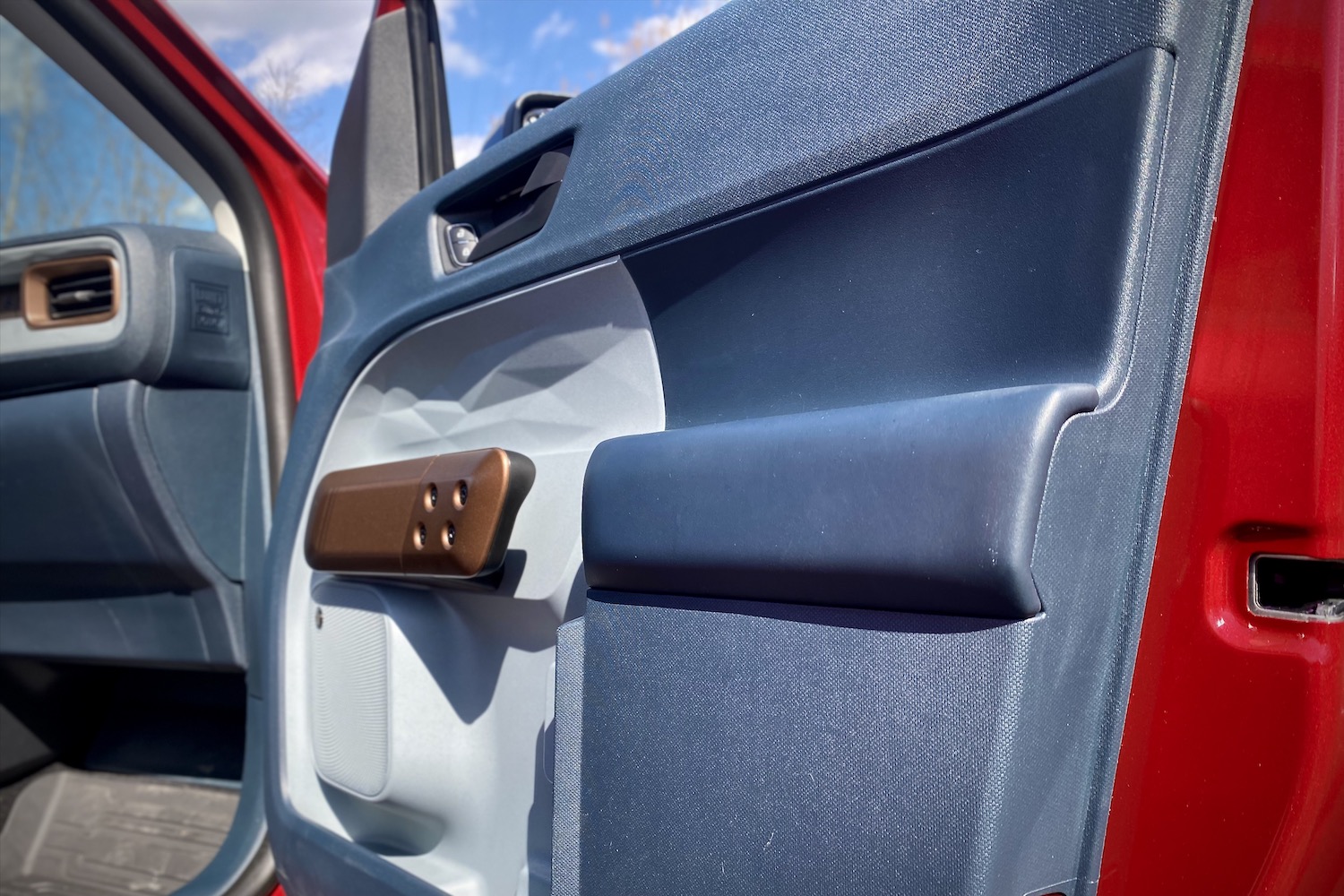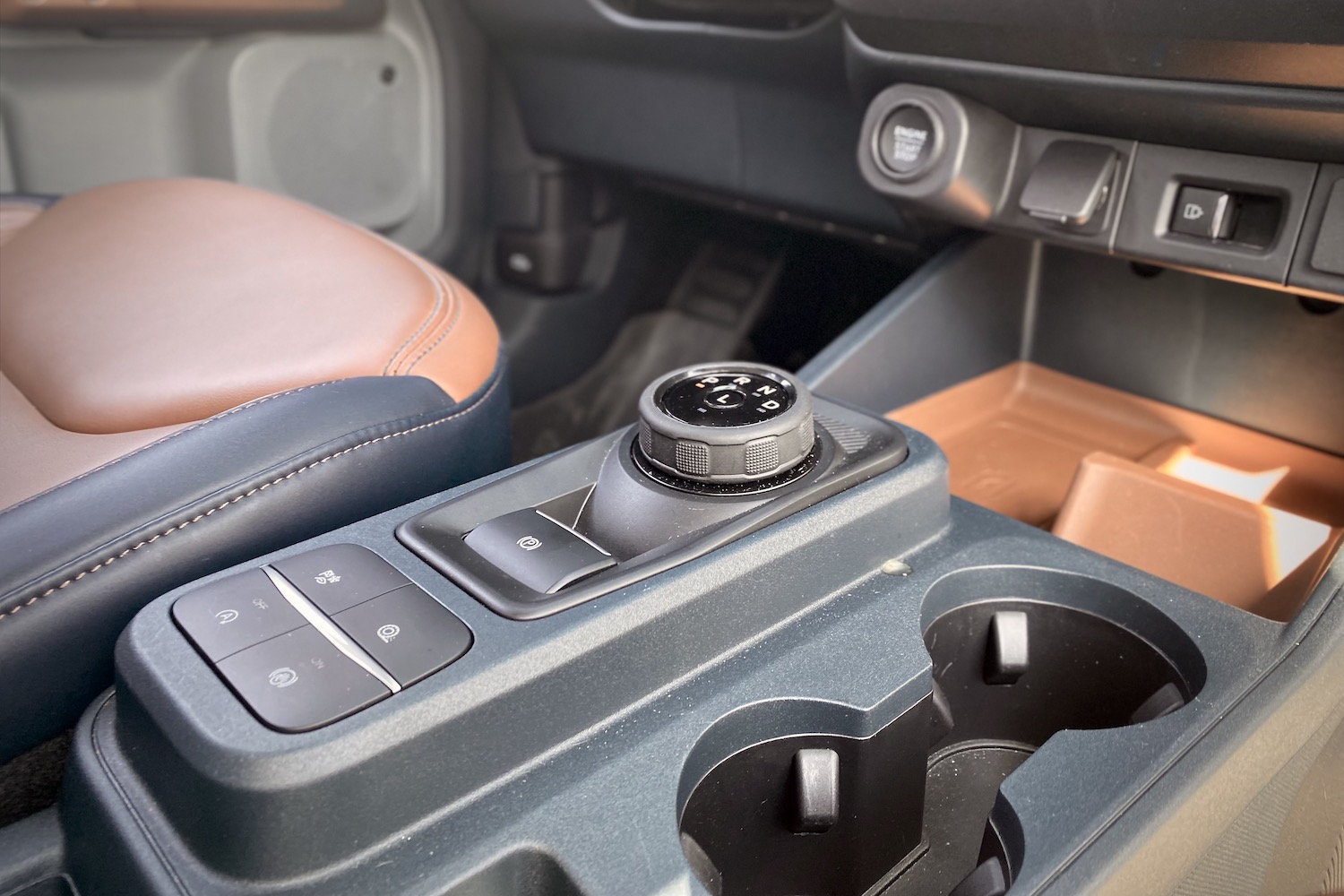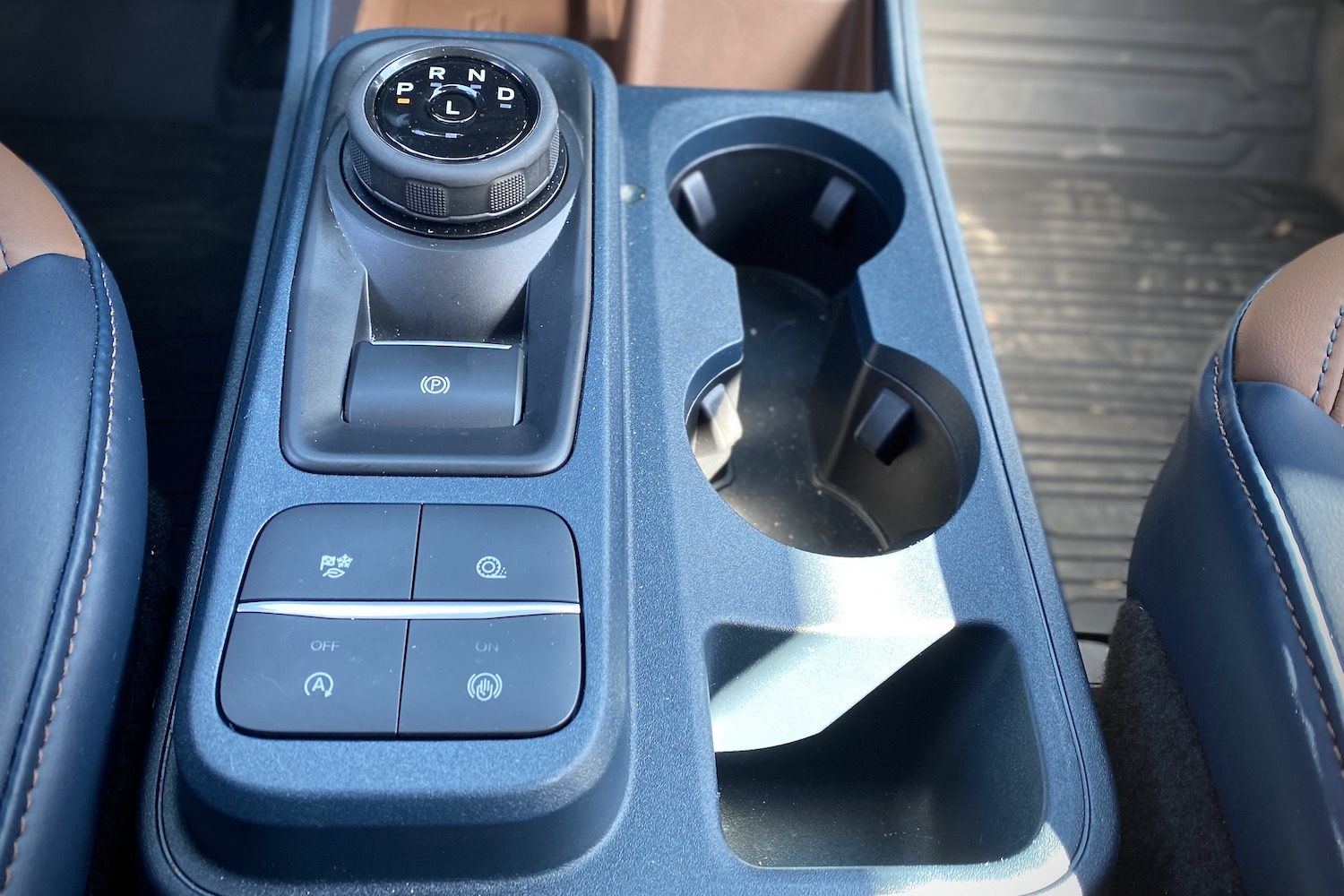Full-size pickup trucks are too big. That’s not an opinion, it’s a simple fact. Unless you live in King County, Texas, large pickups like the Ford F-150, Chevrolet Silverado 1500, and Ram 1500 are overly sized, overly priced nuisances on the road.
I can’t even count the number of times I’ve seen a pickup truck take up multiple spots at a Whole Foods parking lot or cause traffic because the driver realizes the truck’s too big to fit down an alley. The situation has only gotten worse, as automakers have started to come out with larger bodies for more interior space for passengers. It’s a knee-jerk reaction as more and more consumers require the space to use their trucks as daily drivers.
The size of the 2022 Ford Maverick is just one of the many things that makes it great. The tiny, yet mighty Maverick is roughly 11 inches shorter in length than the midsize Ranger and 28 inches shorter than the F-150. This means the Maverick is actually drivable in the city. Its tiny size also means that it doesn’t cost as much as the average pickup truck, which has quickly become a six-figure purchase.
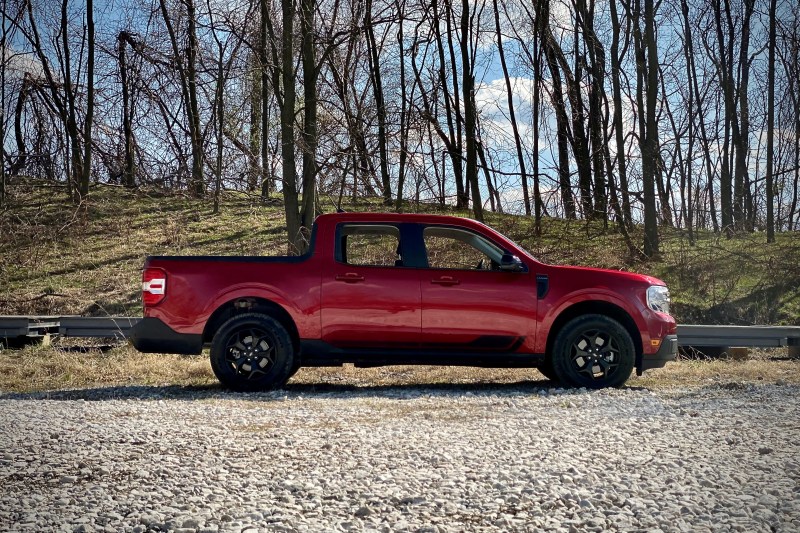
Most people will look at the Maverick and scoff. Its tiny stature isn’t what some would consider truck-worthy. Its 1,500-pound payload capacity and 4,000-pound towing capacity make midsize trucks, which top out at 7,700 pounds for towing capacity, look like world-class haulers. Then, there’s its available turbo four-cylinder engine that caps out at 250 horsepower — a minuscule amount compared to the Ram 1500 TRX pumping out a mighty 702 horsepower that’ll make you yell ‘Merica.
For people who believe these things, all I have to say is that you’re wrong. The Maverick is Ford’s best pickup because it does things differently. There’s an entire subset of drivers out there that hate pickup trucks because they’re too big, too capable, too expensive, and too powerful.
They’ve been waiting for someone to answer the call of a small pickup that focuses on being comfortable, affordable, and easy to drive. It’s taken a very long time for someone to listen, but Ford finally has. And its answer to the requests is the excellent-in-nearly-every-single-way Maverick.
Design and Interior
The Ford Maverick and Hyundai Santa Cruz have jump-started a new class of compact pickup trucks. While the Santa Cruz tries to hide its truckly duties, the Maverick embraces them. It’s not the flashiest truck on sale and it won’t yell in your face about being a truck, but it hasn’t forgotten about its roots. With its boxy design and elements that have been borrowed from Ford’s larger pickups, the Maverick is very much a truck.
On the outside, there’s a simple honesty to the Maverick’s design. Even the range-topping Lariat trim that we tested looks like it’s a simple work truck from the outside. The flashy red paint job, 17-inch black wheels, and black decals from the First Edition package add some pizazz, but this is still a truck that wants to do truck-like things. You can give your golden retriever a haircut, trim its nails, and put a bow on the dog, but it’s still that goofy, lovable gold retriever that you know — just a slightly better-looking version.
Ford’s engineers and designers really pulled out all of their tricks for the Maverick’s cabin. Don’t expect to get a lot of high-end frills for your money, but there are so many cool design elements, storage compartments, and thoughtful touches that it’s easy to overlook that everything in the cabin is cheap. It’s an interior fit for a sub $20,000 vehicle, but manages to feel nicer than its individual parts.
I was particularly blown away by the number of storage compartments the Maverick has. There are nooks everywhere, including a large space underneath the rear seats, innovative bottle holders in the doors that can hold a 1-liter bottle upright, and a cranny next to the touchscreen. Unlike every other car on the market, Ford also lets Maverick owners customize their interiors with the included Ford Integrated Tether System (FITS). Owners can purchase a $50 FITS accessory package from Ford to add things like trash bins, cupholders, and bag hooks to one of the eight mounts on the inside. Or, handy owners with a 3D printer can make their own accessories. How cool is that?
The Maverick’s bed may not have a tricky tailgate that can cook you dinner and write an email for you, but the 4.5-foot bed does have a few handy elements. There are a number of tie-down points, pockets, and cleats to hold gear. The tailgate can lock in multiple positions to account for longer cargo, while 12-volt power outlets are located on both sides of the bed for people that need to run some extra juice. Slots stamped into the side of the bed allow owners to install their own storage, cargo racks, and elevated floors out of 2x4s or 2x6s.
A 4.5-foot bed may seem small, but it held nine full bags of yard waste, roughly 7-foot-tall cabinets from Ikea, and over 10 bags of potting soil from Costco on separate occasions. Since the bed is tiny and low to the ground, you don’t have to be a CrossFit expert to get into the bed with heavy cargo.
Driving Experience
When Ford debuted the Maverick, the thing that shocked the industry was the standard hybrid powertrain. The Maverick is the only pickup truck on sale that comes with a standard 2.5-liter hybrid four-cylinder engine with an electric motor. Output with the engine is rated at a modest 191 horsepower, but its combined rating of up to 37 MPG is the real star.
The Maverick we tested for a week came equipped with the available turbocharged 2.0-liter four-cylinder engine. It’s far more potent with 250 horsepower and is available with all-wheel drive. The obvious downside of the extra power is the drop in fuel economy, with the EPA giving the engine a combined rating of up to 26 MPG with front-wheel drive. In our week, we saw an average of 23 MPG, which is pretty poor for a vehicle of this size. But the turbo engine is feisty with plenty of pep, though the eight-speed automatic transmission can be slow at times to deliver shifts.
Under the pickup body, the Maverick utilizes a modified version of the same platform that’s found in the Bronco Sport and Escape SUVs. The result is a pickup truck that doesn’t ride like a traditional truck. The truck has a slightly firmer ride than expected, but that’s only on rough roads — the pickup fares much better on city roads that haven’t been neglected for decades. The Maverick surprises with its agility and drivability, both of which are benefits of the crossover platform.
If it were my money, I wouldn’t get the turbocharged four-cylinder engine. It’s not because the engine is lacking performance, that’s far from the case. The Maverick’s real advantage over other pickups is its stellar fuel economy rating with the base hybrid engine. The 2.5-liter four-cylinder engine comes with an electric motor and a 94-kW battery pack for up to 42 MPG in the city and 33 MPG on the highway. Those figures put the Maverick in the same league as the Hyundai Elantra, Honda Civic, and Toyota Corolla.
Should You Get One?
Yes. You should really buy more than one. The main drawback with the Maverick is that it’s harder to buy than a PS5. If and when you can purchase one that’s close to MSRP, do so. Just stick with the base hybrid engine.
